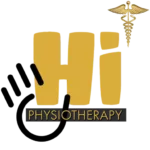- Condition understanding: Physical therapists educate patients about their specific condition, explaining the underlying causes, contributing factors, and how it affects their body and function. This helps patients gain a better understanding of their condition and promotes active participation in the treatment process.
Treatment plan explanation: Physical therapists discuss the recommended treatment plan with patients, including the goals, interventions, and expected outcomes. They explain the rationale behind specific interventions and help patients understand how each component of the treatment plan contributes to their recovery.
Self-management strategies: Patient education involves teaching patients self-management strategies to facilitate their ongoing recovery and maintenance of optimal health. This may include instructions on exercises, stretching techniques, body mechanics, ergonomic modifications, pain management strategies, and lifestyle modifications.
Injury prevention and risk reduction: Physical therapists educate patients on injury prevention techniques and strategies specific to their condition or activities. This may involve providing guidance on proper body mechanics, ergonomics, warm-up exercises, and recommendations for activity modification or training techniques to reduce the risk of future injuries.
Functional training: Patient education in physical therapy often includes teaching patients how to perform specific functional tasks or movements safely and effectively. This may involve teaching proper lifting techniques, walking patterns, balance exercises, or sport-specific movements to enhance performance and reduce the risk of re-injury.
Lifestyle modifications and health promotion: Physical therapists may educate patients on healthy lifestyle practices, such as nutrition, exercise, stress management, and maintaining overall wellness. They may provide guidance on integrating physical activity into daily routines and promote strategies for long-term health and well-being.
Communication and patient-centered care: Patient education also involves effective communication between the physical therapist and the patient. It includes active listening, addressing patient concerns and questions, and fostering a collaborative and patient-centered approach to care. Clear and understandable communication helps patients actively participate in decision-making and take ownership of their health.
Patient education in physical therapy is tailored to each patient’s unique needs, considering their condition, goals, preferences, and health literacy level. It is an ongoing process that occurs throughout the treatment journey, with the physical therapist providing continuous support, guidance, and reinforcement of key information to ensure patient comprehension and adherence to the treatment plan.
By educating patients, physical therapists empower them to take an active role in their recovery, make informed choices, and adopt healthy habits that can positively impact their overall well-being beyond the duration of therapy.


